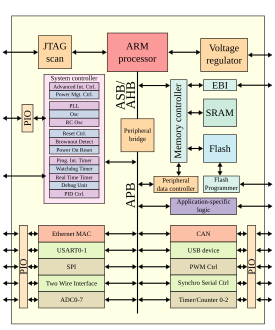|
System on module
  A system on a module (SoM) is a board-level circuit that integrates a system function in a single module. It may integrate digital and analog functions on a single board. A typical application is in the area of embedded systems. Unlike a single-board computer, a SoM serves a special function like a system on a chip (SoC). The devices integrated in the SoM typically requires a high level of interconnection for reasons such as speed, timing, bus width, etc. There are benefits in building a SoM, as for SoC; one notable result is to reduce the cost of the base board or the main PCB. Two other major advantages of SoMs are design-reuse and that they can be integrated into many embedded computer applications.[further explanation needed] HistoryThe acronym SoM has its roots in the blade-based modules. In the mid 1980s, when VMEbus blades used M-Modules,[1] these were commonly referred to as system On a module (SoM).[citation needed] These SoMs performed specific functions such as compute functions and data acquisition functions. SoMs were used extensively by Sun Microsystems, Motorola, Xerox, DEC, and IBM in their blade computers. DesignA typical SoM consists of:
See also
References
|